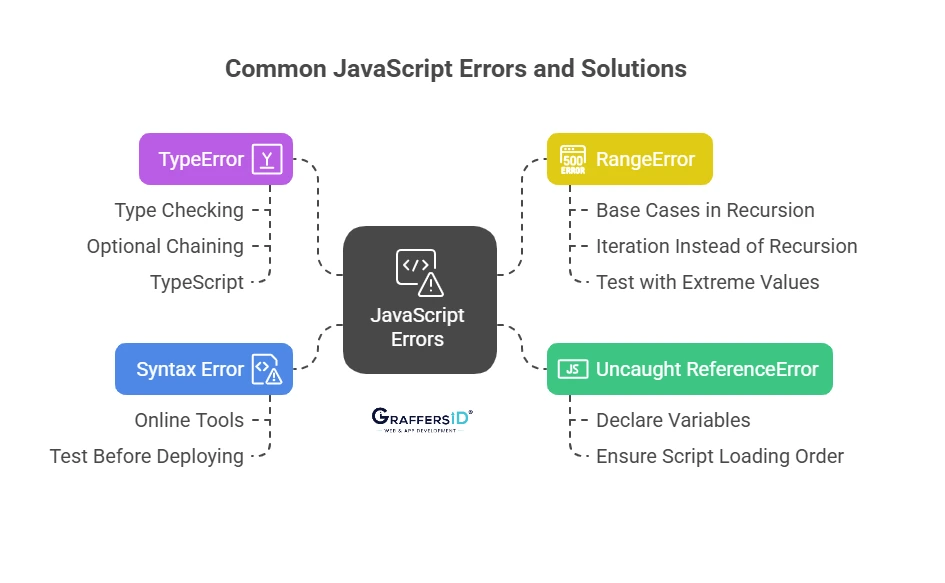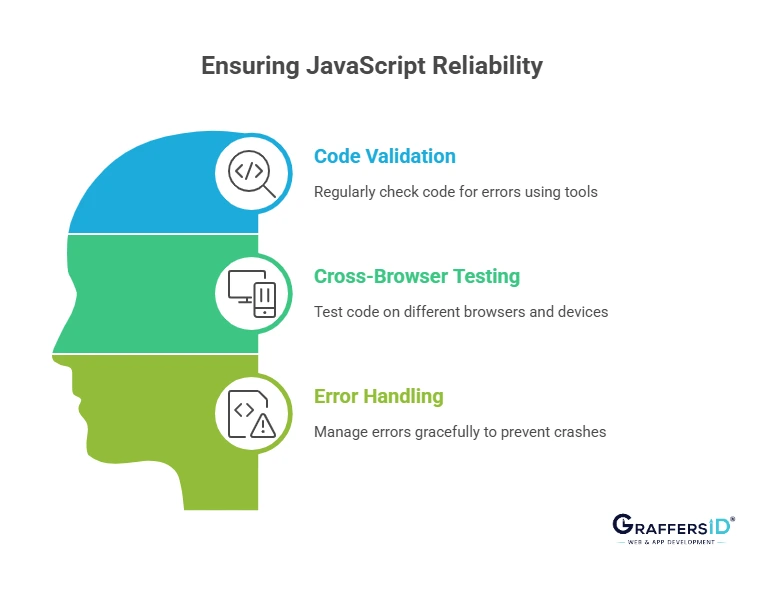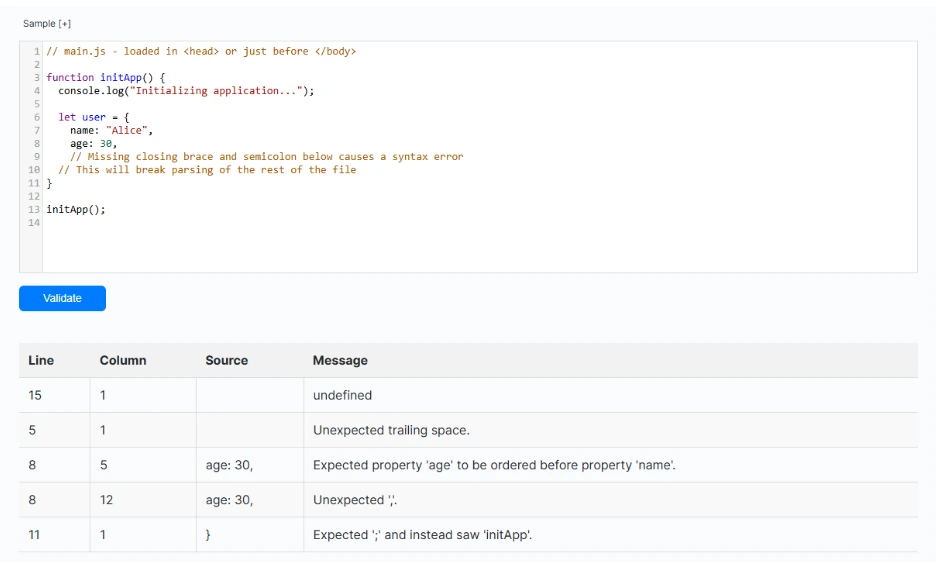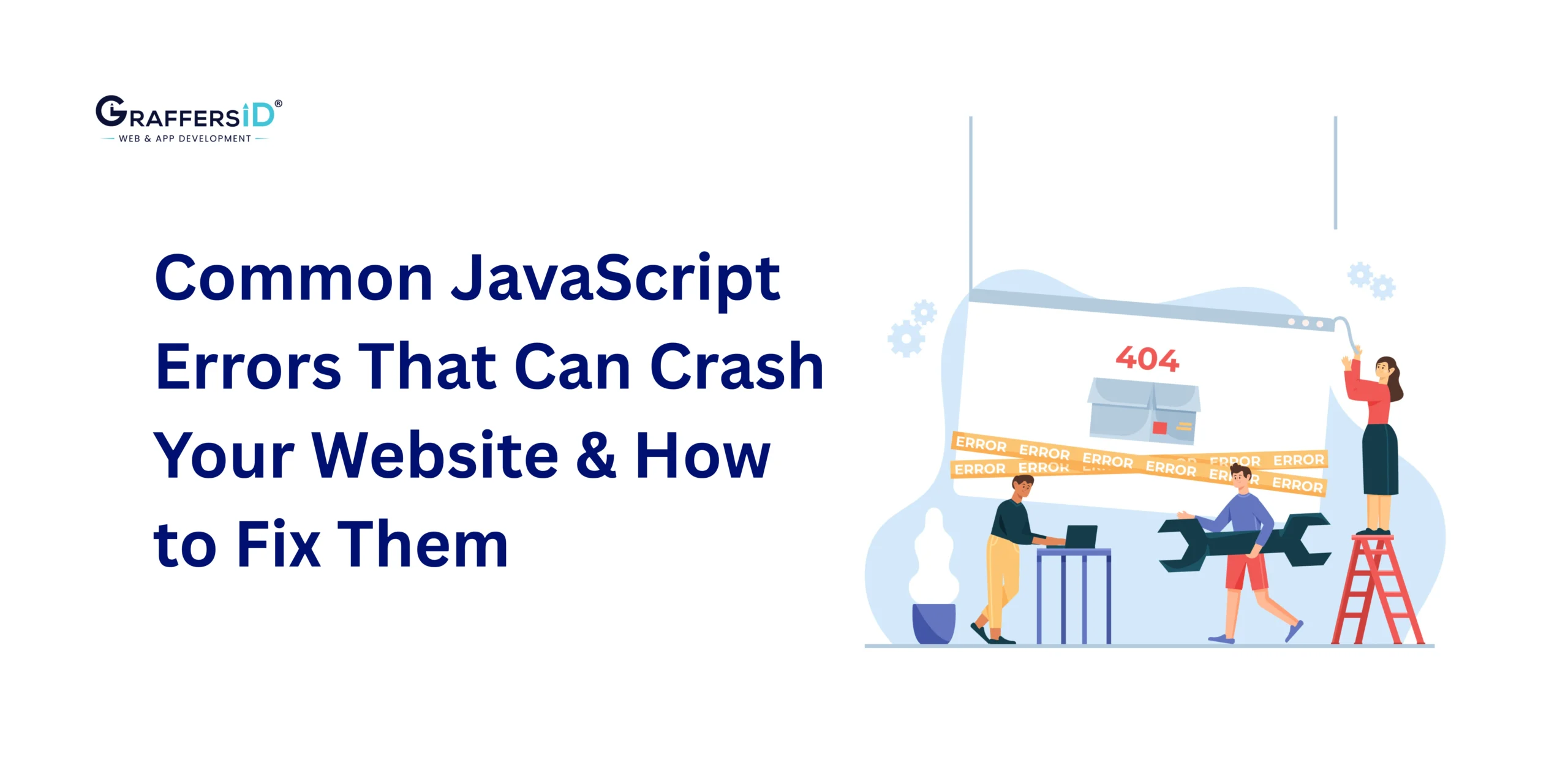It takes only one single rogue JavaScript line to bring an entire website to a halt. From blank screens and broken forms to frozen UI elements, JavaScript errors in your site can easily sabotage both the user experience and website performance.
So, it is important for bloggers and webmasters to learn about the common JS errors and how to fix them efficiently.
In this guide, we’ll break down the most common JavaScript errors that can crash your website and show you exactly how to resolve them before they become a major headache.
Let’s dive in!
Common JavaScript Errors That Can Crash a Website
Below, we have discussed some of the most common JavaScript errors that can result in crashing an entire website.

1. Uncaught ReferenceError
A ReferenceError occurs when the script tries to make use of a variable/function that wasn’t declared in the JS code or is completely out of scope. Apart from this, this JS error can also occur as a result of typos and improper script loading.
Example:
console.log(userName);
// ReferenceError: userName is not defined
When a ReferenceError occurs, JavaScript halts execution at the point of failure. This means any subsequent logic fails to run, ultimately resulting in a broken website UI or a non-functional webpage.
How to fix it?
- First of all, declare all the variables before referencing them.
- When accessing a global variable/script from another file, it is essential to ensure that the script loads in the right order.
2. Type Error
A TypeError occurs when the value is not of the expected type, like calling a method on an unspecified or null variable.
Example:
let name = null;
name.toUpperCase();
// TypeError: Cannot read properties of null
A TypeError is usually dangerous for dynamic websites, as it affects their core features, such as dropdown rendering, form validations, API-driven content updates, and many more.
How to fix it?
Here’s how to efficiently resolve the TypeError issue in JavaScript code.
- Use type-checking before invoking functions. Below is the code you will need for this:
if (typeof name === ‘string’)
{
name.toUpperCase();
}
- It will be good if you employ optional chaining.
let upperName = name?.toUpperCase();
- Consider adopting TypeScript for robust typing and compile-time error detection.
Read More: Understanding JavaScript- Key Features, Benefits, Use Cases
3. RangeError
The RangeError is triggered when the value is not within the expected or allowed range, such as exceeding the maximum call size during recursion.
Example:
function recurse()
{
recurse();
// Keeps calling itself infinitely
}
recurse();
Such a JavaScript error can cause the browser tab to freeze or even crash, resulting in a poor user experience.
How to fix it?
- You should introduce base cases or exit conditions in recursive functions.
- Whenever possible, use iteration instead of recursion.
- Do not forget to test with extreme values to identify potential overflow scenarios.
4. Syntax Error in Critical File
Finally, a syntax error in a core/critical file of the website occurs when the browser or search engine finds invalid code that it can’t parse. This can be due to anything, such as a missing bracket, an unclosed string, a syntax mistake, etc.
Example:
function initApp(
{
console.log(“App Initialized”);
}
// SyntaxError: Unexpected token ‘{‘
A syntax error in the core file, for e.g., main.js can completely prevent the interactive elements of the website from loading, including form functionality, page transitions, etc.
How to fix it?
- Use online tools to find and fix such errors.
- Always test the code before deploying.
Best Practices to Avoid Common JavaScript Errors on Your Website
Here are a few common practices that you should adopt to prevent JavaScript bugs on your website.

1. Perform Code Validation Regularly
To prevent such JavaScript errors on your website, it is widely suggested to regularly validate the entire JavaScript code. By doing so, you can catch the potential bugs before they cause any major harm to the website.
However, the issue is that manually accomplishing the code validation process is not only time-consuming but also error-prone. That’s why many professionals prefer relying on a JS validator – an online tool that quickly and effectively validates the given JavaScript code within a matter of seconds.
If any errors are found, the tool will highlight them along with the location and a brief description.

This automatic code validation will save your valuable time and effort and ultimately help ensure the website is working properly.
2. Test JavaScript Codes in Different Browsers & Devices
It is important to note that JavaScript code that works well in your browser may break in another browser. The same is the case with devices, i.e., laptops, mobiles, tablets, etc.
That’s the reason why it is considered a good practice to always test the code in different browsers, such as Google, Mozilla, etc. While testing, do not forget to analyze:
- How scripts are loading
- Interpreting
- Render under different screens and platforms
3. Handle Errors Gracefully
Last but not least, it is recommended to handle all the JavaScript errors gracefully. Although you may not be able to prevent the issues, it is possible that you can manage them in a way that prevents your site from crashing.
Wondering how? You can use the try-catch statement to control exceptions and script termination. Apart from this, provide fallback UIs or messages whenever something goes wrong on your website.
So, these are a few proven practices that you should adopt to avoid JavaScript errors on your website.
Read More: What is JavaScript And Why JavaScript Is So Popular?
Bottom Line
A single error in the JavaScript code can lead to the website crashing by breaking its UI, freezing the page, etc., ultimately resulting in a poor user experience. Therefore, bloggers and webmasters need to be fully aware of such bugs.
By validating your code regularly, testing across browsers and devices, and handling errors gracefully, you can proactively prevent most issues before they escalate.
Adopting these best practices will ensure your site remains fast, functional, and reliable. Stay ahead of crashes—write clean, tested, and resilient JavaScript.




